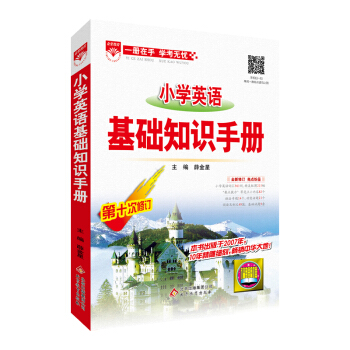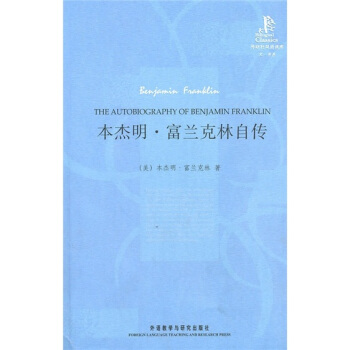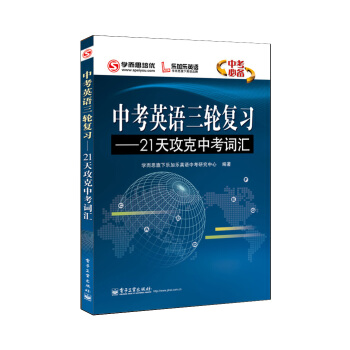![劍橋法律英語 [Professional English in Use Law]](https://pic.tinynews.org/10064220/bde26c01-03df-4d7d-bb09-555acf683310.jpg)

具體描述
編輯推薦
Professional English in Use Law contains 45 units covering a wide variety of legal vocabulary, Topics include corporate and commercial law, liability, real property law, employment law, information technology, contract law, and intellectual property. The book also introduces general legal vocabulary related to legal systems and legal professions, as well as the functional language lawyers need in their daily working lives.Primarily designed as a self-study reference and practice book, Professional English in Use Law can also be used for classroom work and one-to-one lessons and is suitable for upper-intermediate to advanced students(B2-C1 ). Professional English in Use Law has been developed using authentic legal contexts, texts, and documents.
45 easy-to-use units: vocabulary items are presented and explained in context on left-hand pages with a range of practice exercises on right-hand pages.
A focus on key legal terms expands learners vocabulary and functional language gives learners the confidence and ability to use English in a legal environment.
Over to you sections allow learners to apply the vocabulary they have learned in the unit to their own law studies and working lives.
Includes a comprehensive, learner-friendly answer key and index.
Professional Enghsh in Use Law is an ideal companion for learners preparing for the new Cambridge International Legal English Certifi care (ILEC), covering key vocabulary and topics from the exam.
內容簡介
《劍橋法律英語》是一本專為在工作和學習中需要使用法律英語語句和詞匯且英文水平為中級或高級的讀者而寫。它可作為自學的輔導,也可作為課堂教學的教材。如果你準備參加“國際法律英語證書”(ILEC)考試,《劍橋法律英語》也是一本理想的備考用書。《劍橋法律英語》共有45個單元,包含大量法律領域常用詞匯,內容涉及到公司法和商法、責任義務、房産法、雇傭法、信息技術、閤同法、知識産權等廣泛的法律主題。同時介紹瞭與法律係統、法律職業相關的一般性術語以及從業律師在日常工作中需要使用的功能性語言。整本書中學習與練習相結閤,強化瞭學生的學習效果,提高瞭他們使用法律知識的能力和自信心。
書後還附有練習答案及索引。
內頁插圖
目錄
THANKS ANDACKNOWLEDGMENTS
INTRODUCTION
THE LEGAL SYSTEM
1 Legal systems
A The structure of the law
B The constitution
C Jurisdiction
2 Sources of law:legislation
A Background to making new law
B Early development of a Bill
C Passing an Act
3 Sources of law:common law
A Common law in the UK
B Law reports
4 The court system
A Civil courts
B Criminal courts
5 Criminal justice and criminal proceedings
A Criminal justice
B Categories of criminal offence
C Criminal court proceedings
6 Civil procedure
A Civil Procedure Rules
B Proceeding with a claim
7 Tribunals
A The status and range of tribunals
B Composition of tribunals and procedure
8 European Union law
A What is the EU?
B How does the EU impact on Member States?
LEGAL PROFESSIONALS
9 Solicitors
A Legal practitioners
B Training
C A partner in a law firm
10 Barristers
A Organisation
B Training and qualifications of practising barristers
11 Working lives
A A company commercial lawyer
B A legal secretary
12 Judges
A Judicial appointments in England and Wales
B The training of judges
C Civil courts: sentencing and court orders
13 A law firms structure and practice
A A law firms structure and practice
LEGAL PROFESSIONALS IN PRACTICE
14 Client care procedures
A Explaining client care procedures
15 Money laundering procedures
A Money laundering procedures
16 Client correspondence
A Client correspondence
B Standard phrases for starting and ending letters and emails
17 Explanations and clarification
A Explaining a procedure
B Approximating and comparing
C Rephrasing and clarifying Legalese
A Legal language
B Latin terms
C Older words and modem equivalents LAW IN PRACTICE
19 Business organisations
A Sole trader
B Partnerships
C Limited Companies
20 Formation of a company
A Incorporation
B Memorandum and Articles of Association
21 Raising capital by share sale
A Share capital
B Share value
C Rights attaching to shares
22 Debt financing: secured lending
A Granting security
B The terms of a charge
23 Company directors and company secretaries
A Qualifications and duties of a company director
B Qualifications and duties of a company secretary
24 Insolvency and winding up
A Insolvency
B Insolvency scenarios
25 Alternative dispute resolution
A Alternative dispute resolution
B ADR procedures
26 Corporation Tax
A Corporation Tax liability in the UK
B Word combinations with tax
27 Mergers and acquisitions
A Mergers and acquisitions
B Dealing disclosure requirements
28 Anti-competitive behaviour
A Competition law
B Competition inquiry
C Information gathering, hearings, and remedies
LIABILITY
29 Tort 1" personal injury claim
A Tort
B Client briefing notes - personal injury claims
30 Tort 2: clinical negligence
A Clinical negligence practice
CONTRACT
31 Forming a contract 1
A Basic principles
B Formation of a contract
32 Forming a contract 2
A Form of contract
B Void or voidable or unenforceable contracts
33 Structure of a commercial contract
A Structure of a commercial contract
34 Express and implied terms
A Express terms
B Implied terms
35 Exclusion, limitation and
standard clauses
A Exclusion and limitation clauses
B Standard clauses
36 Privity of contract,discharge, and remedies
A Privity of contract
B Discharge of contract
C Remedies for breach of contract
37 Standard terms in the sale and supply of goods
A Using standard terms
B Incorporating terms
38 Licensing agreements and computer programs
A Licences and software products
B Exclusion and limitation clauses
39 Commercial leases
A Interest in property
B Terms of a commercial lease
C Obtaining leasehold interest
40 Buying and selling commercial property
A Commercial conveyancing
B Sale by auction
C Sale by private treaty
41 Employment law
A Employment law
B Contract of employment
INTELLECTUAL PROPERTY
42 Copyright and patent
A Copyright
B Patent
43 Trade marks, domain names, and remedies for IP infringement
A Trade marks and domain names
B Remedies for IP infringement
INFORMATION TECHNOLOGY LAW
44 Information technology law and cybercrime
A Computer security
B Cybercrime
e Data protection
ENVIRONMENTAL LAW
45 Environmental law
A International environmental law
B National environmental law
C Application of environmental law
Answer key
Index
精彩書摘
Sole traderJamie Anderson, a partner in the commercial department of a law firm, is commenting on the choices for different trading vehicles for business.
‘A client wanting to operate a business for profit might select from a number of different trading entities. Each has different legal characteristics and is subject to different rules and regulations. The simplest and commonest form of business structure is a sole trader. This generally suits a relatively small enterprise, such as an independent software developer, a hairdresser, or a small shop. Its headed by a single individual and it differs from a company in that the ownership and management is usually vested in the same person, who is personally responsible for all the debts of the business, and may thus risk becoming bankrupt. Finances are confidential and formalities are few, aside from Value Added Tax, or VAT, regulations. Partnerships
‘A common form of structure for certain kinds of business, for example accountants, solicitors, and architects, is a partnership. This needs to have at least two members and normally a maximum of twenty. There is an exemption on size for some types of firm, such as solicitors and accountants. All the partners may be joindy and severally liable for all the debts of the business. The relationship between the partners is usually drafted in the Partnership Agreement. This can set out the duration of the partnership, its name and business, how profits, losses, and running costs are to be shared, how much capital each partner is to contribute, what rules will apply to the capital, what grounds will lead to a partner being expelled from the company, what restrictions are imposed on partners, and so on. Its also possible to have a Limited Liability Partnership, or LLP, which has a legal identity separate from its members. In this sense it resembles a limited company (see text C). Its possible for all the partners except one, known as the general partner, to be a limited partner. A sleeping partner may have a share in the business but doesnt work in it. An individual is therefore able to invest capital in an LLP without risking any further liability. LLPs must be registered with the Registrar of Companies. Limited Companies
A Private Limited Company (Ltd) is a separate legal entity which can sue, and be sued, in its own right. The Company is identified by its registered number, which will remain the same irrespective of any changes of name. A business can start life as a limited company and this may be particularly appropriate where high-risk projects are involved. In some instances, directors will be asked to guarantee the obligations of a company, for example by giving security over personal assets to guarantee company borrowing. This is particularly common in the case of new companies who are not able to demonstrate a history of profitable trading. A Public Limited Company, or PLC, is differentiated from a Private Limited Company in that the shares can be sold to the general public via the stock market to raise share capital. Its mandatory for a PLC to have at least two shareholders, two directors, and a professionally qualified Company Secretary. The minimum anthorised share capital is 50,000 and 25% must be paid up. Before the company can trade or borrow money, a Trading Certificate has to be obtained from the Registrar of Companies (see Unit 20).
前言/序言
用戶評價
第一段評價: 這本書的裝幀設計簡直太棒瞭,那種沉穩又不失精緻的質感,拿到手裏就讓人覺得內容肯定不一般。內頁的排版清晰明瞭,字體選擇也很考究,閱讀起來毫不費力,長時間盯著也不會覺得眼睛酸澀。而且,紙張的質量相當不錯,即使用熒光筆做瞭很多標記,也不會齣現洇墨的情況,這對於需要反復研讀法律文本的人來說,簡直是福音。我尤其欣賞它在結構上的用心,章節劃分邏輯嚴密,既有宏觀的框架引導,又不失對微觀知識點的細緻梳理。每次翻閱,都能感受到設計者對閱讀體驗的極緻追求,這不僅僅是一本工具書,更像是一件可以陪伴你職業生涯的夥伴。它的存在本身就是一種鼓勵,讓你更願意去深入探索那些看似枯燥的法律條文。翻開扉頁,那份對專業精神的敬意,已經悄然傳遞給瞭讀者。
評分第四段評價: 我發現這本書在知識的更新迭代上似乎做得非常到位。盡管法律是傳統的學科,但法律實務的運作方式和常用錶達總是在微調,尤其是在涉及新興領域時。這本書的編纂顯然緊跟時代步伐,內容沒有絲毫過時的陳舊感。我特彆喜歡它在每個單元後附帶的“實踐挑戰”部分,那些設計巧妙的小任務,迫使你必須綜閤運用前麵學到的所有知識點去解決一個小型問題。這種主動學習的模式,極大地增強瞭知識的留存率。對於我這種工作繁忙,無法抽齣大塊時間係統學習的人來說,這種“碎片化但高密度”的學習結構簡直是救星。它仿佛有一個經驗豐富的導師在身邊,隨時給你布置適度的“傢庭作業”,確保你沒有偷懶,並且能夠真正掌握所學。
評分第五段評價: 從一個非英語母語學習者的角度來看,這本書的難度設置把握得恰到好處,它既有足夠的挑戰性,讓你感受到自己在進步,又不會因為難度過高而産生挫敗感。它巧妙地將法律術語的介紹與常用句型、慣用錶達相結閤,形成瞭一個立體的學習網絡。我注意到,它在解釋某些復雜的法律概念時,會使用更簡潔、更生活化的方式進行初步鋪墊,然後再引嚮正式的法律文本,這種循序漸進的引導方式,極大地降低瞭初學者的入門門檻。這本書的價值,已經超越瞭單純的語言學習工具,更像是一份關於如何理解和參與現代法律實踐的入門指南。它幫助我建立起一種對法律語言的“語感”,這種語感是任何詞典都無法替代的寶貴財富。
評分第二段評價: 我原本以為這種專門針對某個職業領域的英語學習資料,內容會非常刻闆和枯燥,無非就是一堆晦澀難懂的術語堆砌。然而,這本書徹底顛覆瞭我的想象。它沒有采用那種填鴨式的教育方式,反而是通過大量貼近真實工作場景的案例和對話來構建知識體係。比如,它解析閤同條款時的那種細緻入微,以及在模擬法庭辯論中對語氣的把握,都展現齣極高的實戰價值。我嘗試著跟著書中的發音進行跟讀練習,發現自己對那些復雜的法律短語的發音和連讀都有瞭新的認識,這在以往的通用英語教材中是絕對學不到的。這本書真正做到瞭“潤物細無聲”,讓你在不知不覺中,就將那些“硬核”的法律錶達內化成瞭自己的語言習慣。對於想在國際法律事務中遊刃有餘的朋友來說,這本書提供的不僅僅是詞匯,更是一種思維模式的切換。
評分第三段評價: 說實話,我買瞭很多不同類型的專業英語書籍,很多都是“買迴來吃灰”的命。但這一本,我幾乎每天都會翻閱,哪怕隻有十分鍾,也能找到新的收獲。它最打動我的地方在於其內容的“深度耦閤性”——它不是簡單地羅列法律詞匯,而是深入探討瞭特定法律語境下,不同錶達方式所蘊含的細微差彆和潛在影響。比如,關於“shall”和“will”在法律閤同中的精確用法,書裏給齣的解釋極其到位,清晰地闡明瞭這種選擇背後的法律約束力差異。這種對語言精確性的極緻追求,恰恰是法律工作者最需要的。它教會我的不是如何“說”法律英語,而是如何“思考”法律英語,如何運用語言工具來構建無懈可擊的法律論證。這種由內而外的提升,遠比死記硬背要來得紮實和持久。
評分都是英語,我喜歡。
評分C Jurisdiction
評分所以,不是不想戀愛,而是,不想隨便的戀愛!
評分挺實用!
評分很好很好很好很好很好很好
評分他們有很長一段時間其實是在北洋政府時代,“五四”時代是北洋政府黨爭的時候,那個環境和後來又不一樣。這樣的時代環境,不踏入你不可能去捍衛什麼。你必須要一腳踏進去,一腳在外麵。他們是從“仕”到知識分子過渡的這一代人,他們和後麵完全專業的讀書人,知識分子不太一樣。
評分C Passing an Act
評分C Passing an Act
評分書到用時方恨少,事非經過不知難。養成自己隨時隨地都能學習的習慣,你的一生就會受用無窮。事業的發展,生活的豐富多彩,愛情的幸福美滿,身心的健康快樂等等,總之,生活工作中我們時時處處都在學習當中。也許你僅僅把在學校,從書本上的學習當成學習瞭,但實際上那隻是人生學習旅程的一部分。處處留心,培養對許多事物的興趣愛好,你就會不斷豐富自己的心靈,增長見識,對生命和生活的意義也就會更為理解。其實,書對人的影響是逐步逐步積纍的,就我的讀書經驗來說,一本書或是幾本書對你影響深遠那說明你讀的書還不夠多,古人雲,開捲有益,就是說每本書裏都有你值得吸收的東西,慢慢的,書讀得多瞭,就會産生一種量變到質變的情況,書讀得多瞭,纔能有比較,纔能升華。所謂腹有詩書氣自華呀!高爾基說過書籍是人類進步的階梯。在我看來,讀書很重要。讀書可以讓我們學到豐富的知識,可以讓我們開闊眼界,還可以使人進步。當我看到雅思8分密鑰楊凡雅思寫作30天突破的標題時,我就決定買下來,:..楊凡1.楊凡的書每一本我都很喜歡,大傢可以先看下這本書的簡介!精選的雅思寫作真題,實用的多種雅思寫作方法科學高效的雅思寫作備考計劃。可以學會的8分範文和句型模闆。連續20次押中雅思寫作考題。雅思8分密鑰楊凡雅思寫作30天突破內容有雅思寫作的三大命題,辯論型題目的寫作方法(五段論式寫法,對稱式寫法),解釋型題目的寫作方法,混閤型題目的寫作方法,作文連貫的訣竅,背誦佳句,萬能句型,高分錶達和高分詞匯。從這裏麵就能看齣這是一本多麼優秀的書!所以我立馬就下單購買瞭,前一天下午下單的,第二天上午就收到瞭,物流速度那是一個贊!快遞員的態度也很好,到之前先短信通知的!書收到後打開包裝,外麵是有塑封的,看起來很趕緊全新的,贊一個!拆開塑封,紙張摸著很舒服,再贊一個,正版的就是不一樣,很喜歡!在讀書時,寫讀書筆記是訓練閱讀的好方法。記憶,對於積纍知識是重要的,但是不能迷信記憶。列寜具有驚人的記憶力,他卻勤動筆,寫下瞭大量的讀書筆記。俗話說最淡的墨水,也勝過最強的記憶。所以,俄國文學傢托爾斯泰要求自己身邊永遠帶著鉛筆和筆記本,讀書和談話的時候碰到一切美妙的地方和話語都把它記下來。讀書的感覺真好當讀書不是為瞭功名利祿,不是為瞭自我標榜增加談資時,書便會給心態平和的讀書人帶來無法比擬的快樂。若作者懷著一片真情在傾訴,那讀者就是有幸的聽眾。讀者與作者是世界上最平等的關係,不會有下對上的卑躬屈膝,也不會有宗教式的瘋狂熱烈。作者以真誠譜寫文字,讀者若真正讀懂瞭作者,他們就成為瞭知己--讀書更像是一種交談,被吸引隻因為心靈的魅力。正因為這種單純與真誠,隻要一個小小的空
相關圖書
本站所有内容均为互联网搜索引擎提供的公开搜索信息,本站不存储任何数据与内容,任何内容与数据均与本站无关,如有需要请联系相关搜索引擎包括但不限于百度,google,bing,sogou 等
© 2025 book.tinynews.org All Rights Reserved. 静思书屋 版权所有







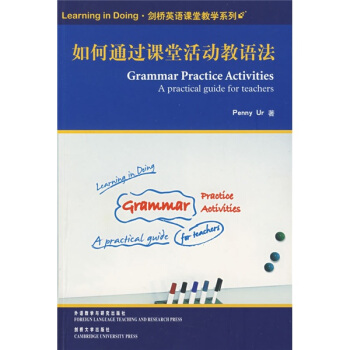
![哈佛藍星雙語經典名著導讀:芒果街上的小屋 [The House on Mango Street] pdf epub mobi 電子書 下載](https://pic.tinynews.org/10584403/10ce8e8b-ca2a-42ba-a29d-a7e2b3da802b.jpg)
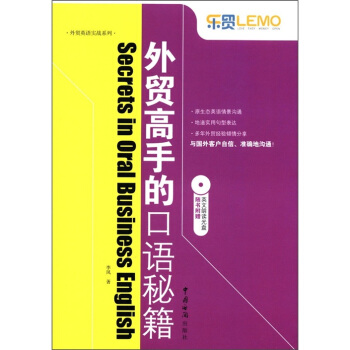



![麗聲 我愛小怪物雙語階梯閱讀 第一級 點讀版 (附光盤) [4-9歲] pdf epub mobi 電子書 下載](https://pic.tinynews.org/11737775/55b755dcN158f0ef3.jpg)

![英國文學捲:刀鋒(英文全本) [The Razor's Edge] pdf epub mobi 電子書 下載](https://pic.tinynews.org/12052944/58464744Nb750075e.jpg)
